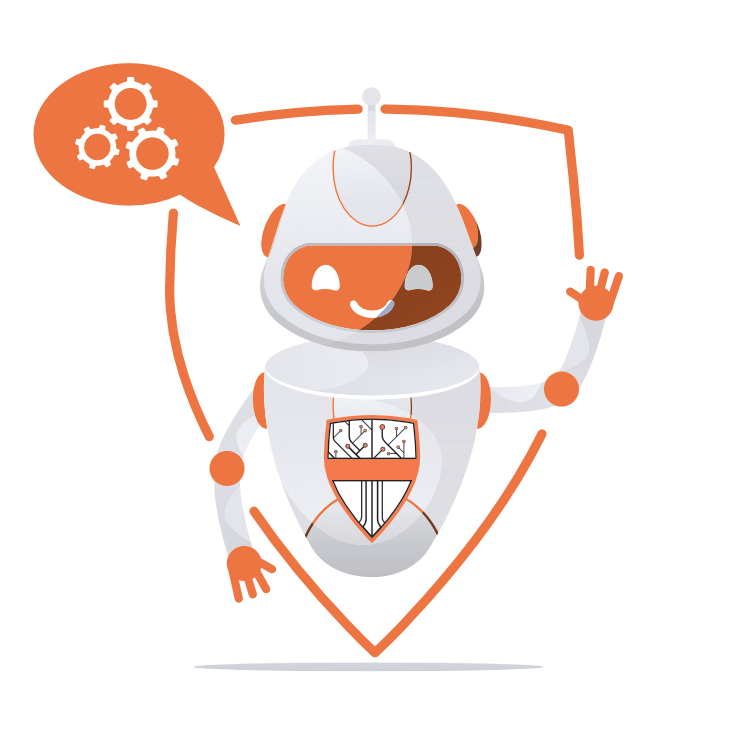Gamification in Revenue Cycle Productivity
Last month, Invicta’s President, Derek Shaw, participated in a Modern Healthcare webinar along with Dawn Lunde, Senior Director of Sales Engineering for ABILITY Network, and Tony Rinkenberger, Revenue Cycle Executive & Management Consultant with Innovo Advisors. Dawn Lunde led Derek and Tony through a lively conversation focused on improving productivity in the Revenue Cycle Management process. You can watch the webinar here and/or read the abstract of the webinar in this month’s issue of Modern Healthcare, which published yesterday.
The webinar discussion touched on gamification in the workplace, which those of us “behind the shield” know is a hot topic with Mr. Shaw. We asked him to unpack his insights on gamification and how it can and will continue to influence performance measurement in the workplace and more specifically in healthcare revenue cycle.

Since gamification in the workplace is directly tied to measuring productivity, could we start by hearing your definition of productivity?
As we discussed in last month’s webinar, productivity is not a buzzword. At minimum, productivity is how much work gets done in a particular period. However, it’s much bigger than this. Productivity impacts morale and culture. If we don’t know how we are doing, then how can we take pride in our work and set bars for improvement?
How do you measure productivity at Invicta?
That’s a broad question. Across the organization, there are several constants. First, Invicta commits to quality by utilizing proven Project Management Body of Knowledge (PMBOK) practices to achieve consistent and high-quality deliverables. Second, we utilize technology to define operational metrics that monitor both the volume and quality of the work being performed. Third, we incorporate industry-wide metrics that make sense for our scope of service and integrate them into our standard set of reports. Fourth, we build in client-specific metrics as part of the implementation process, because no client is a mirror of another, and no hospital patient is the same as another. We aren’t selling silver bullets here. Fifth, we encourage symmetrical feedback from top to bottom, bottom to top and across departments. Finally, we look at keystrokes. How many steps does it take to get from the beginning to the end and which of these steps can be re-engineered through robotic process automation (RPA) and artificial intelligence?
We all know that data is important. Yet, revenue cycle executives bemoan the continually evolving data sets used to measure performance. Why is this?
Data is the cornerstone of productivity. We need good information to make decisions and refine processes. We frequently hear from our clients and others in the industry that they receive reports with information that is not easy to digest and is thus meaningless. We must determine what we want to measure before we define how to measure it. This sounds simple. In fact, it can be complex. It is imperative to build systems and outline the qualitative and quantitative key performance indicators (KPIs) that support what needs to be measured.
So, we’ve put our measurement systems in place. Is gamification the shiny, new toy for rewarding performance in revenue cycle management?
In fact, gamification evolved as an offshoot of the concept of competition. Sports, video games, social media applications, retail promotions, etc. have been offering incentives and badges to reward users e.g., competitors for meeting pre-determined performance standards. “Winners” receive some sort of acknowledgement that they performed “better” than the rest of the competition. We know that revenue cycle performance is quantified in a variety of ways. Gamifying elements of RCM performance provides a way for individuals and teams to compete against themselves and others. We can use gamification to improve employee engagement, elevate performance, strengthen teams, change habits, and to generally incentivize. I think one of the best side benefits of gamification in performance measurement is that it gives employees a positive experience with automation. Most importantly, working in a gamified environment facilitates employee engagement and reinforces a fun work environment for all team members.


What role do you think COVID-19 and the uptick of remote work environments have and will continue to play in the integration of gamification throughout the healthcare RCM workplace?
Certainly, we can point to study after study that have shown gamification as a successful engagement tool for healthcare employees, service provider employees, hospital patients, and so forth. We also can see studies that showed engagement dropping off after a while, mostly due to a declining value of the reward system. With the increase in remote work settings for employees from multiple generations and backgrounds – many of whom have always worked in a live, office setting – managers can use tools like gamification to highlight performance metrics and provide real time internal feedback. The challenge for organizations is taking traditional gamification models (leaderboards and KPIs written on an office community board) and translating those to the Web where all remote employees can still feel engaged and see their progress in real time.
Final thoughts?
Invicta team members have heard my mantra of “One Band, One Sound” repeatedly. Creativity and imagination are not strictly reserved for the product development teams. Have fun with your gamification ideas and keep employee communication transparent to hone and customize your games.
Contact info@invictahs.com today for more information on our capabilities.
LEARN MORE
Last month, Invicta’s President, Derek Shaw, participated in a Modern Healthcare webinar along with Dawn Lunde, Senior Director of Sales Engineering for ABILITY Network, and Tony Rinkenberger, Revenue Cycle Executive & Management Consultant with Innovo Advisors. Dawn Lunde led Derek and Tony through a lively conversation focused on improving productivity in the Revenue Cycle Management process. You can watch the webinar here and/or read the abstract of the webinar in this month’s issue of Modern Healthcare, which published yesterday.
The webinar discussion touched on gamification in the workplace, which those of us “behind the shield” know is a hot topic with Mr. Shaw. We asked him to unpack his insights on gamification and how it can and will continue to influence performance measurement in the workplace and more specifically in healthcare revenue cycle.
Since gamification in the workplace is directly tied to measuring productivity, could we start by hearing your definition of productivity? As we discussed in last month’s webinar, productivity is not a buzzword. At minimum, productivity is how much work gets done in a particular period. However, it’s much bigger than this. Productivity impacts morale and culture. If we don’t know how we are doing, then how can we take pride in our work and set bars for improvement?

Since gamification in the workplace is directly tied to measuring productivity, could we start by hearing your definition of productivity?
As we discussed in last month’s webinar, productivity is not a buzzword. At minimum, productivity is how much work gets done in a particular period. However, it’s much bigger than this. Productivity impacts morale and culture. If we don’t know how we are doing, then how can we take pride in our work and set bars for improvement?
How do you measure productivity at Invicta?
That’s a broad question. Across the organization, there are several constants. First, Invicta commits to quality by utilizing proven Project Management Body of Knowledge (PMBOK) practices to achieve consistent and high-quality deliverables. Second, we utilize technology to define operational metrics that monitor both the volume and quality of the work being performed. Third, we incorporate industry-wide metrics that make sense for our scope of service and integrate them into our standard set of reports. Fourth, we build in client-specific metrics as part of the implementation process, because no client is a mirror of another, and no hospital patient is the same as another. We aren’t selling silver bullets here. Fifth, we encourage symmetrical feedback from top to bottom, bottom to top and across departments. Finally, we look at keystrokes. How many steps does it take to get from the beginning to the end and which of these steps can be re-engineered through robotic process automation (RPA) and artificial intelligence?
We all know that data is important. Yet, revenue cycle executives bemoan the continually evolving data sets used to measure performance. Why is this?
Data is the cornerstone of productivity. We need good information to make decisions and refine processes. We frequently hear from our clients and others in the industry that they receive reports with information that is not easy to digest and is thus meaningless. We must determine what we want to measure before we define how to measure it. This sounds simple. In fact, it can be complex. It is imperative to build systems and outline the qualitative and quantitative key performance indicators (KPIs) that support what needs to be measured.

So, we’ve put our measurement systems in place. Is gamification the shiny, new toy for rewarding performance in revenue cycle management?
In fact, gamification evolved as an offshoot of the concept of competition. Sports, video games, social media applications, retail promotions, etc. have been offering incentives and badges to reward users e.g., competitors for meeting pre-determined performance standards. “Winners” receive some sort of acknowledgement that they performed “better” than the rest of the competition. We know that revenue cycle performance is quantified in a variety of ways. Gamifying elements of RCM performance provides a way for individuals and teams to compete against themselves and others. We can use gamification to improve employee engagement, elevate performance, strengthen teams, change habits, and to generally incentivize. I think one of the best side benefits of gamification in performance measurement is that it gives employees a positive experience with automation. Most importantly, working in a gamified environment facilitates employee engagement and reinforces a fun work environment for all team members.

What role do you think COVID-19 and the uptick of remote work environments have and will continue to play in the integration of gamification throughout the healthcare RCM workplace?
Certainly, we can point to study after study that have shown gamification as a successful engagement tool for healthcare employees, service provider employees, hospital patients, and so forth. We also can see studies that showed engagement dropping off after a while, mostly due to a declining value of the reward system. With the increase in remote work settings for employees from multiple generations and backgrounds – many of whom have always worked in a live, office setting – managers can use tools like gamification to highlight performance metrics and provide real time internal feedback. The challenge for organizations is taking traditional gamification models (leaderboards and KPIs written on an office community board) and translating those to the Web where all remote employees can still feel engaged and see their progress in real time.
Final thoughts?
Invicta team members have heard my mantra of “One Band, One Sound” repeatedly. Creativity and imagination are not strictly reserved for the product development teams. Have fun with your gamification ideas and keep employee communication transparent to hone and customize your games.
Contact info@invictahs.com today for more information on our capabilities.
LEARN MORE





